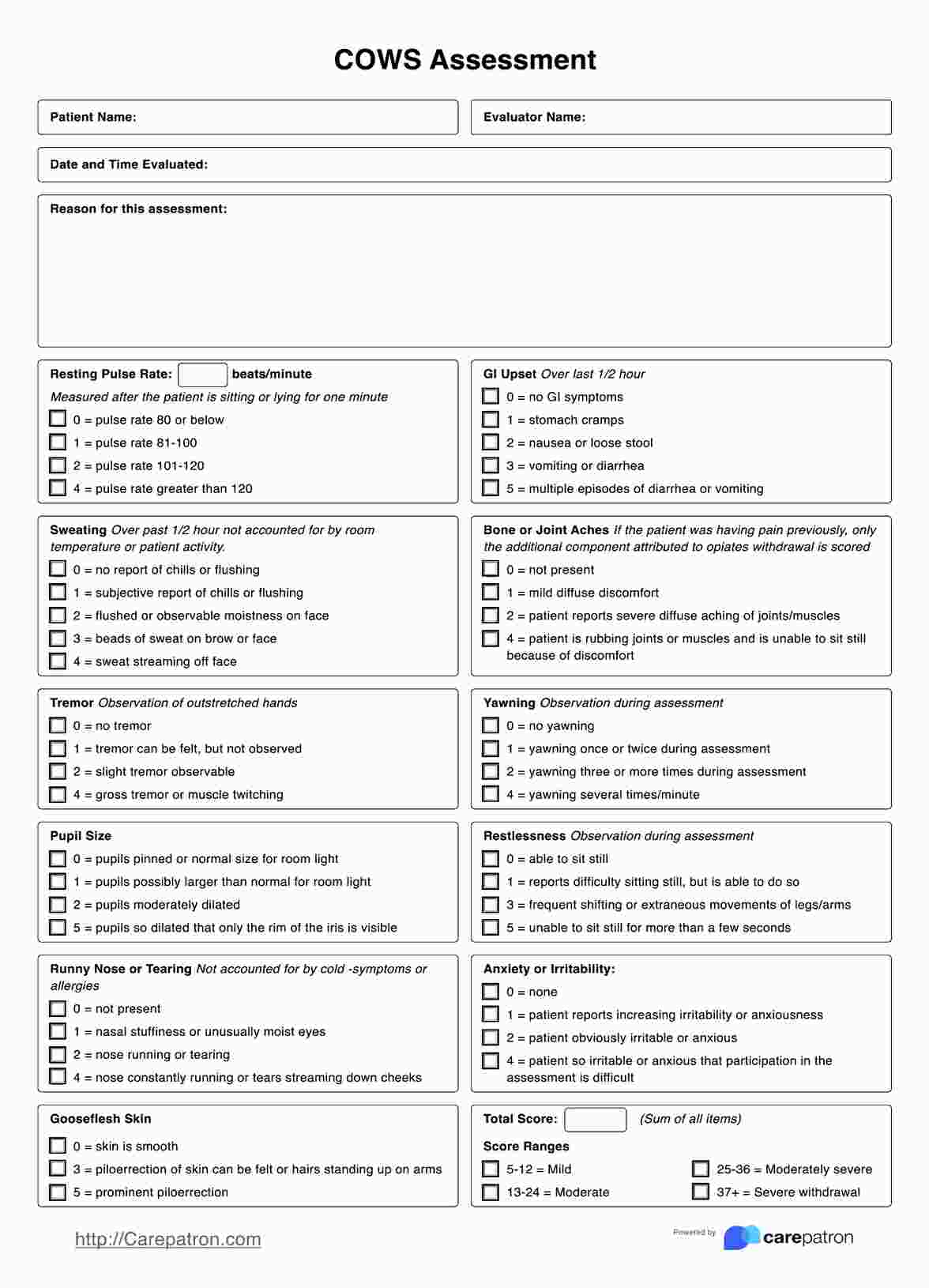The COWS Assessment is a useful tool that will help clinicians assess the rehabilitation patients they have who are experiencing withdrawal symptoms. This tool will help them assess the severity of their withdrawals and assist with determining how to care for their patients during detoxification.

COWS Assessment
Is your patient going through withdrawal? Make use of the COWS Assessment to assess the severity of their withdrawal and see what you can do to help their rehabilitation process go smoothly.
COWS Assessment Template
Commonly asked questions
Since you have to monitor your patient multiple times a day, using this assessment three to four times a day should help you see any consistencies in your patient’s withdrawal symptoms, as well as track any changes (whether they’re getting worse or if they are improving).
The reason for this is that buprenorphine has the side effects of an opioid, like sweating, tremors, palpitations, dry mouth, and more. While it can be used to help combat withdrawal symptoms since it can dimish the patient’s physical dependency on opioids, it might only make things worse if the patient’s withdrawal symptoms are severe. It’s always best to be on the safe side.
EHR and practice management software
Get started for free
*No credit card required
Free
$0/usd
Unlimited clients
Telehealth
1GB of storage
Client portal text
Automated billing and online payments











